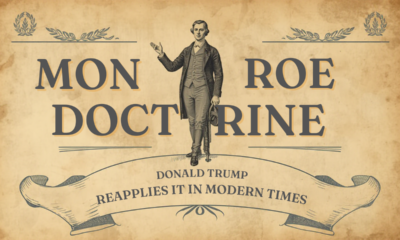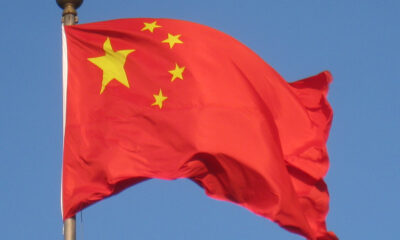Executive
Why U.S. Arms Control Efforts are Failing
American arms control efforts are failing because other parties are not interested in what the United States has to tell them.

Prospects for arms control among the world’s nuclear-armed great powers are growing worse by the day. Last week, China announced that it was halting nuclear talks with the United States over the latter’s arms sales to Taiwan. The discussions were unlikely to lead to any substantive results, but it is another sign that U.S. efforts to “compartmentalize” nuclear issues by de-linking it from the geopolitical rivalry driving U.S.-China competition are failing. The same dynamic is at play in U.S.-Russia relations. After renewing the New START treaty in February 2021, Russia suspended its participation last year, citing U.S. support for Ukraine and its aim of inflicting a “strategic defeat of Russia.”
Arms control ill-timed?
U.S. arms control policy is not making headway for several reasons. All three countries are executing generational nuclear modernization programs to update their Cold War-era arsenals. China is also disinclined to negotiate limits to its nuclear arsenal before it reaches parity with the United States. But more important is the fundamental difference between the United States, and China and Russia in how they approach arms control policy.
The United States is attempting to separate nuclear issues from other disputes, the logic being that its great power adversaries still have an overriding interest in upholding strategic stability even when relations are poor. Conversely, U.S. adversaries view nuclear weapons as competitive tools that are integral to geopolitical competition. China and Russia will not make concessions on arms control if U.S. policies and behavior that encroach upon their core interests are not addressed.
The current trajectory of great power relations is already leading to increased tensions in the nuclear domain. China and Russia both have reasons to use nuclear weapons to attain a risk-taking advantage when faced with a conventionally superior foe. In East Asia, there is a high possibility China would resort to nuclear escalation if a conflict over Taiwan involving the United States broke out. Russia has successfully used its “nuclear shield” to ward off NATO intervention in Ukraine by issuing credible threats to escalate the conflict. In both cases, nuclear escalation risks are tied to geopolitical developments that implicate core Chinese and Russian interests.
China and Russia have the old U.S. playbook
The irony is that China and Russia are employing the same linkage strategy that the Nixon administration successfully used to negotiate the landmark SALT I agreement and ABM Treaty, wind down the Vietnam War, and initiate the Middle East peace process. As Helmut Sonnenfeldt, a senior staff member of the National Security Council, later said of linkage: “Its purpose was to establish a trend toward more normal and restrained political competition. These interconnections [between various political issues] were not capricious or artificial. They were part of the realities of international life from which the Soviet Union no more than the United States could escape.”
Today, U.S. policymakers have good reasons to seek limits on China and Russia’s nuclear arsenals. Arms control can help stabilize great power relations while avoiding the costs of an unlimited nuclear buildup, an important consideration in a tripolar nuclear system. Less discussed but still significant is how arms control can allow the United States to develop qualitative advantages over its competitors even as it accepts quantitative limits on the size of its arsenal. As Cold War historian John D. Maurer has explained, the Intermediate-Range Nuclear Forces Treaty limited U.S. and Soviet deployments of land-based missiles but left the United States free to pursue advances in air and sea-launched weapons where it had a military-technological advantage over the Soviet Union.
Geopolitical tensions
As during the Cold War, arms control policy cannot be separated from the geopolitical tensions shaping U.S.-China and U.S.-Russia relations today. Discussions with China are unlikely to go anywhere for the foreseeable future as Beijing continues to expand its arsenal in a bid to reach parity (or something close to it) with the United States. Yet, if U.S. and Chinese officials find themselves sitting at the negotiating table again, U.S. policymakers should link progress on arms control with Chinese restraint toward Taiwan. Of course, this will also require U.S. reassurances that it does not support Taiwanese independence and, in the words of the 1972 Shanghai Communique, “reaffirms its interest in a peaceful settlement of the Taiwan question by the Chinese themselves” through cross-strait dialogue.
There is greater potential for talks with Russia. Both sides have comparable nuclear arsenals and there is a long history of arms control cooperation with existing mechanisms for verification and compliance. However, as Russian officials have repeatedly stated in recent years, nuclear negotiations must take place alongside a more comprehensive dialogue about the Euro-Atlantic security architecture. This could involve a “grand bargain” where NATO membership for Ukraine is taken off the table in exchange for a cessation of military hostilities. Limits on U.S. forward missile deployments and NATO’s military presence in Eastern Europe could also be considered to incentivize Russian restraint.
How to make arms control work
U.S. policy cannot disconnect nuclear issues from the geopolitics that influence international security trends. Those aiming to reduce the risks of nuclear escalation in Europe and East Asia should embrace the strategy of linkage that helped moderate great power competition during the Cold War and avoid catastrophe.
This article was originally published by RealClearDefense and made available via RealClearWire.
Matthew C. Mai is a contributing fellow at Defense Priorities.
-

 Executive2 days ago
Executive2 days agoWaste of the Day: Can You Hear Me Now? No.
-

 Civilization2 days ago
Civilization2 days agoTrump’s version of the Monroe Doctrine
-

 Civilization3 days ago
Civilization3 days agoOne Fell Swoop: Lawsuit Eyes Death Blow to Racial Preferences
-

 Civilization2 days ago
Civilization2 days agoTrump’s New Doctrine of Precision Deterrence
-

 Civilization1 day ago
Civilization1 day agoThe Mission to Extradite Nicholas Maduro
-

 Civilization1 day ago
Civilization1 day agoThe Snatch and Grab of Maduro Was Not ‘Illegal’
-

 Executive4 days ago
Executive4 days agoWaste of the Day: $1.6T in Wasteful Spending in Rand Paul’s “Festivus” Report
-

 Guest Columns4 days ago
Guest Columns4 days agoAdvice to Democrats Regarding Maduro Arrest: Resist Reflexive Opposition






